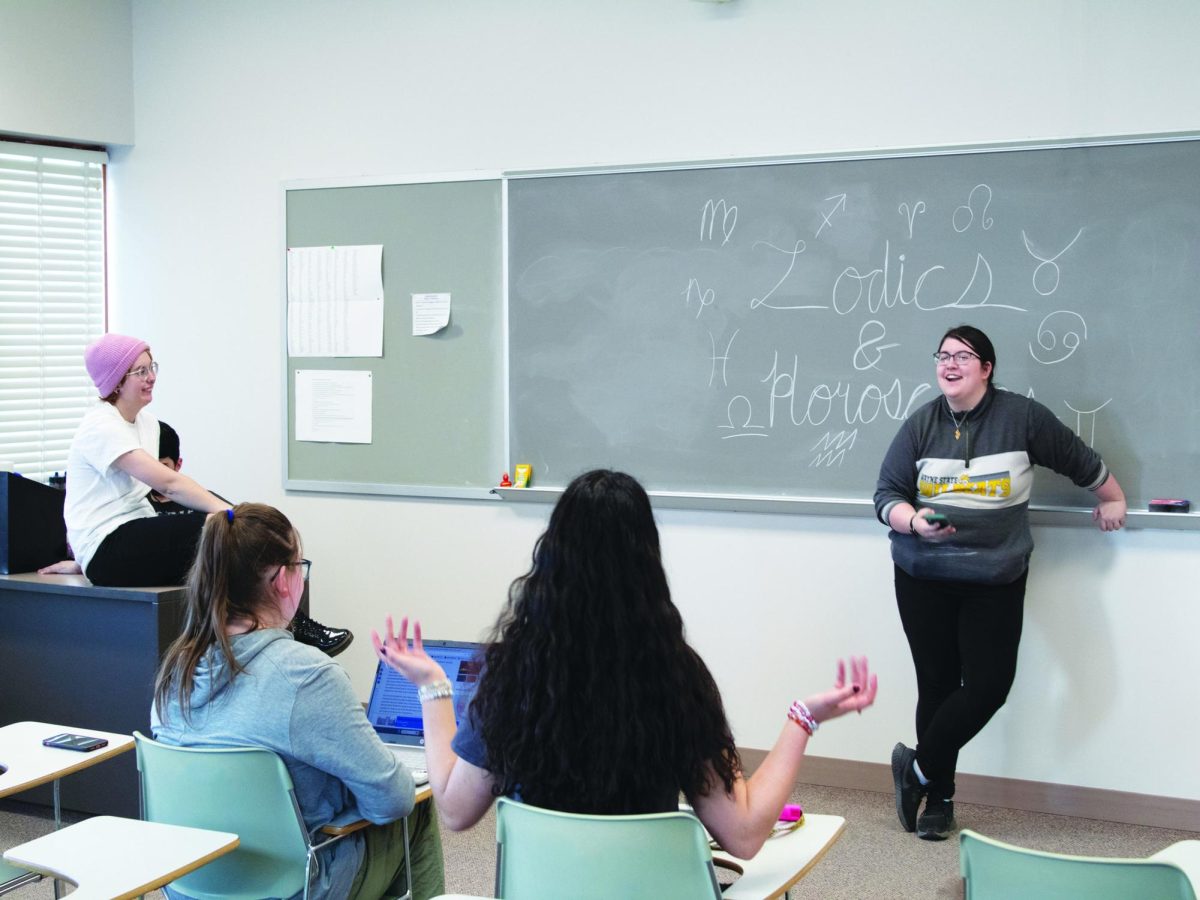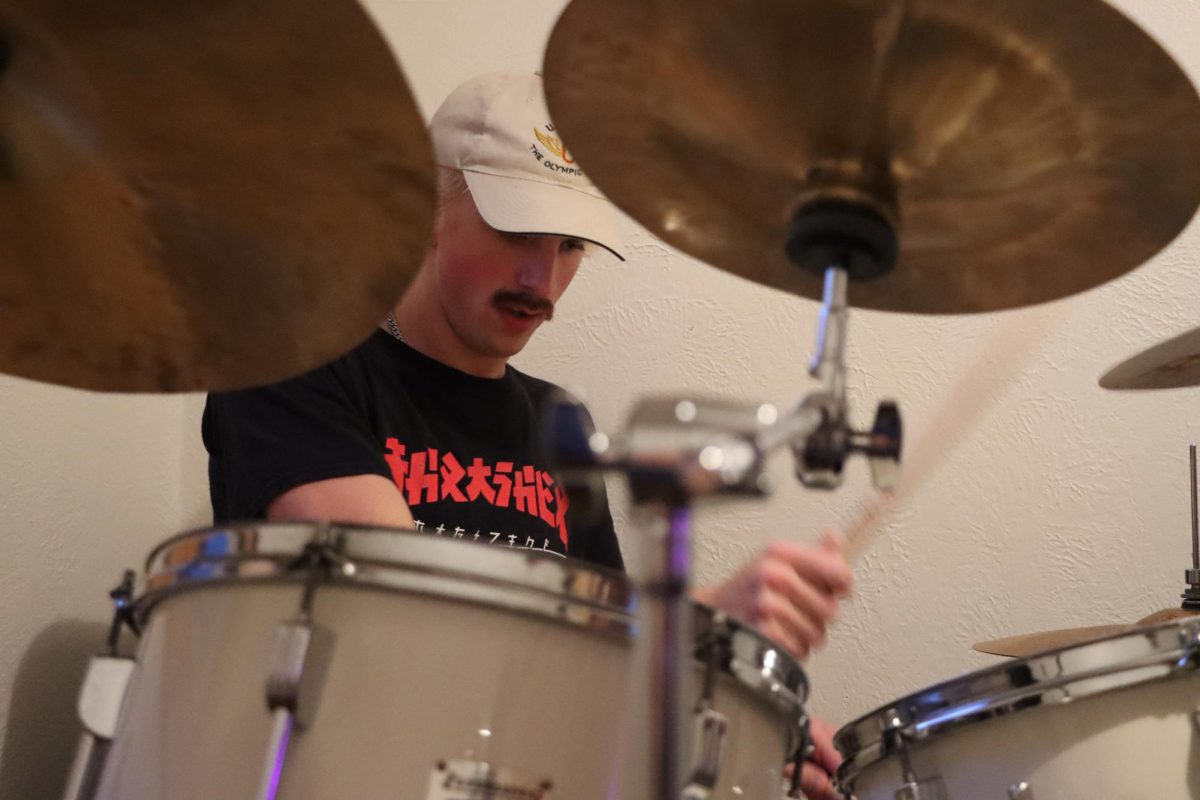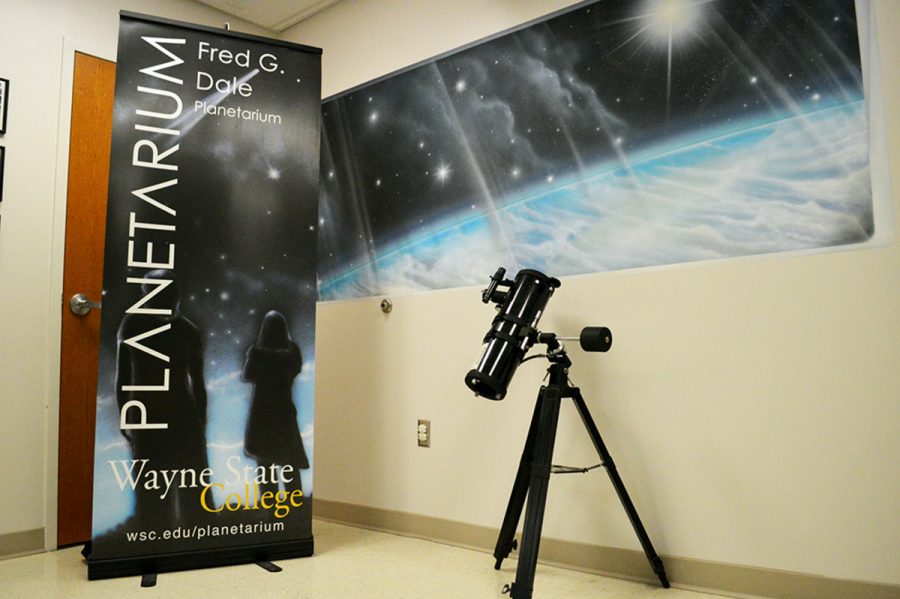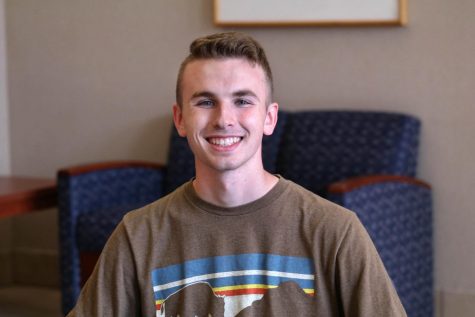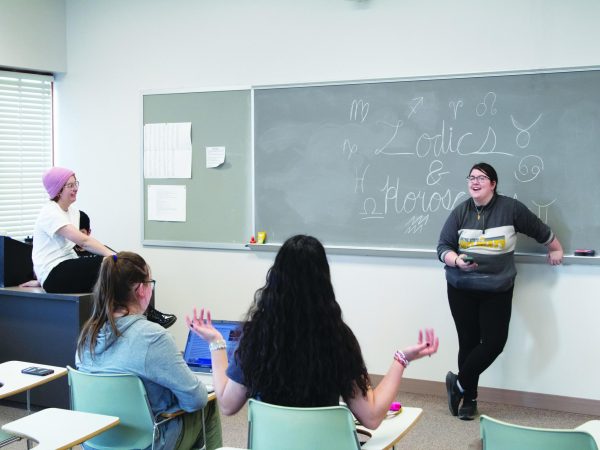The History of the Wayne Planetarium
September 24, 2021
With flooding, weddings, and classes, the Fred G. Dale Planetarium at Wayne State College boasts a rich history and provides Todd Young, a professor of physics and astronomy, a way to provide back to the Wayne community.
The Fred G. Dale Planetarium was built with the original science building in 1969. In the center of the planetarium, where a digital projector now resides, was a 10-foot pit where an opto-mechanical projector rose out.
An opto-mechanical projector, according to Young, is, “A really bright light-bulb inside of a sphere with strategically placed holes that cast light onto the dome that produced a beautiful starry night.” Unlike today’s Planetarium, there were 70 plastic chairs Young described as uncomfortable that people could sit on to look up at the dome for the shows.
The planetarium gets its name from Fred G. Dale, a former student at Wayne State Normal in 1914. According to the history page on the planetarium’s website, he played football and basketball at Wayne and continued his athletic career at the University of Nebraska- Lincoln. He served in World War I in 1918 and, after graduating, came back to Wayne to coach all sports. He became a teacher in the subjects of geography and conservation.
In Dec. of 2009, due to cold temperatures, a water pipe burst and flooded the planetarium. The 10-foot pit filled with water and, once the flooding was controlled, the college filled in the pit with concrete and renovations were done to the planetarium. The plastic chairs were exchanged for movie-theatre seats and a new digital projector took the place of the opto-mechanical projector.
Young has different shows throughout the year based on the seasons and presents to his students in the classroom. The planetarium has a fall, holiday, and spring season.
“Right now, if you come to the planetarium, the first thing you will get is a tour of an autumn night sky,” Young said. The planetarium has themes based on the weekend with most shows hovering at 50-minutes in length. The shows can take you outside of the Milky Way Galaxy.
The planetarium has seen over 140,000 people walk through its doors, according to the history page on the planetarium website Young says astronomy isn’t the only topic shown in the planetarium. From laser shows, math, and a tour to the Sistine Chapel, the variety keeps people coming back to the dome, according to Young.
“Everybody wants to know more about the universe they’re in,” Young said.
The launch of the James Webb Telescope is being celebrated on Oct. 16 from 11 a.m. to 5 p.m. The planetarium will have Dr. Alexandra Tetarenko from Texas Tech University, an expert on black holes, visit and give a presentation about the telescope and how it will aid her research on black holes. The planetarium is being sponsored by the Space Telescope Institute.
The shows at the planetarium aren’t just for adults. Young says there is a kid’s weekend with shows specifically for children, including one with Big Bird and Ernie from Sesame Street.
On a specific kid’s weekend, Young had a particularly fond memory of two parents bringing their child with a lot of energy to the planetarium.
“When I turned down the lights and started the show,” Young said. “The kid stopped moving and watched…the 35-minute show.” The parents thanked him after the show for getting their child to sit still for a half-hour.
Young wants to see more than just planetarium shows in the theatre.
“I would love to see…one act plays or speech contests in here,” Young said. “We actually had our first wedding in the planetarium…in mid-August.” The planetarium plans another wedding in June 2022.
The public displays are on Friday nights and Saturday afternoons with laser shows starting one hour after the planetarium shows.
“I always tell people they should visit the planetarium at least once while at Wayne State College,” Young said.

